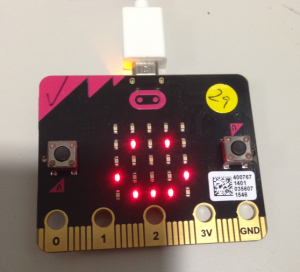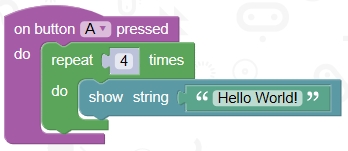The BBC Micro:Bit is the small (very small – smaller than a credit card) computer being distributed to every year 7 child in the country as part of a BBC initiative to help get children coding. The Micro:Bit website tells us that this little computer is in fact 18 times faster than the original BBC Micro computers from the 80s, which some of us (not mentioning any age groups) will remember, probably fondly.
I was excited to first get my hands on a Micro:Bit earlier this year, and my initial impression was how instant and accessible it was. I connected it to my laptop via a micro-USB cable, launched a browser, went to the Micro:Bit website and was coding in seconds.
And no sooner was I coding, than I thought how applicable to KS2 computing it was, despite being aimed at KS3.

This is mainly because the Micro:Bit website, through which the coding tools can be accessed, offers us 4 different programming environments. Whilst the Javascript and Python editors might be better led from the hands of specialist teachers, the Microsoft Block Editor will immediately seem familiar to many primary teachers, as it resembles other block programming tools such as Blockly and Scratch. And so even without glancing at the included tutorials, I was able to make the virtual Micro:Bit (displayed onscreen so you can test your code) flash that first “Hello World” message in seconds on its LEDs. And by downloading my code and copying it over to the actual Micro:bit I could see my program in action, for real.

Since the Micro:Bit became available, a number of local primary schools have contacted me to find out how they can buy their own devices so that KS2 children may develop their programming skills in this way. It will be interesting to see how widespread this device becomes across primary schools, as it becomes embedded in secondary practice.



